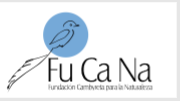Home – Landing Page
RESERVA NATURAL DON LUIS
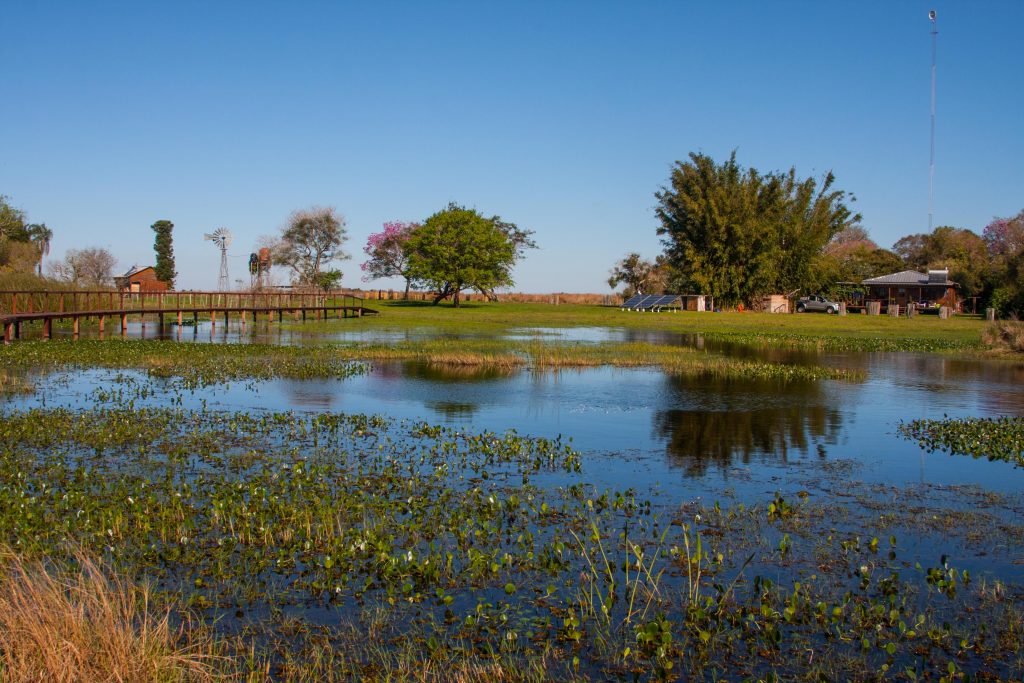
We purchased Reserva Don Luis in 2010 after searching for 2 years for a suitable place for a reserve. We have had to work hard to restore this former cattle ranch to its natural state. As well as being a nature reserve we are also a research station and have several projects in the pipeline including our popular bat research program and our research into the Ibera Seedeater. We also are host to 2 projects with Rewinding Argentina, involving a Giant Anteater and continuation with the Red & Green Macaw reintroduction. We welcome visiting biologists and conservation scientists for research into our native species. We sometimes need volunteers, especially in the Argentine spring, to help with the running of the place. If you would like to volunteer please use the contact form to get in touch.
OUR WILDLIFE
Reserva Don Luis in the Esteros del Ibera, hosts a rich variety of wildlife, including several endangered species such as Ibera Seedeater, Strange-tailed Tyrant, Marsh Deer, Giant Anteater, Neotropical Otter. We also host reptiles such as the Spectacled Caiman, snakes such as the Yellow Anaconda, Howler Monkeys, Capybaras and 16 species of bat.
Here are some examples:
Ibera Seedeater
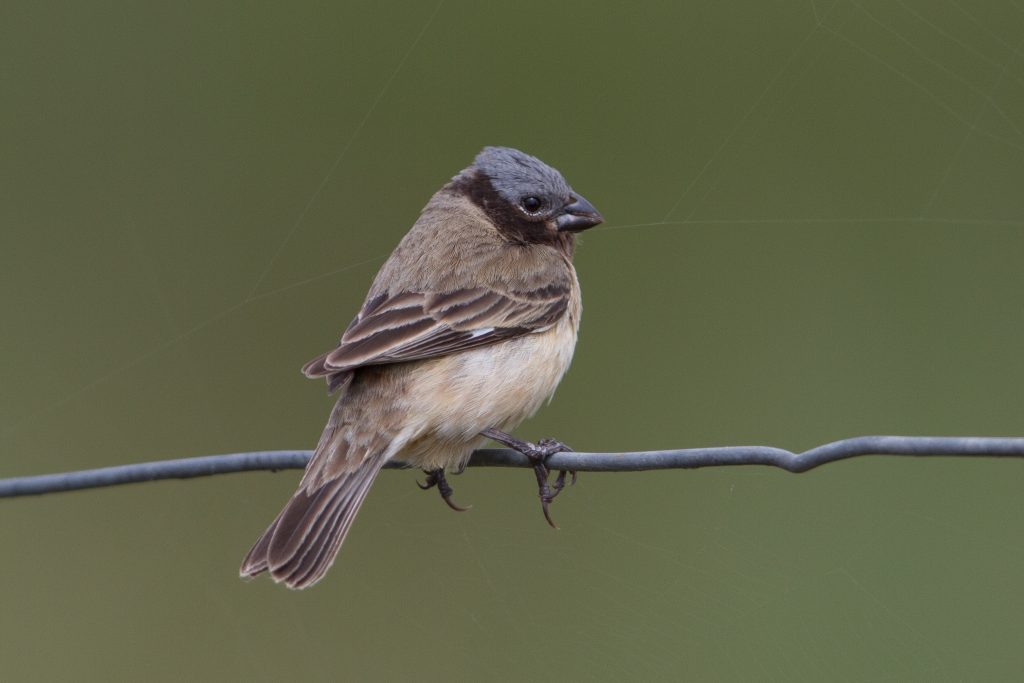
Sporophila iberaensis
We are delighted to announce that we have been awarded a grant from Mohamed bin Zayed Conservation awards. This is to help protect this endangered species from cattle invasions, provide a bird ringing program and observe the nests using sensitive camera traps. We started the project in October 2025 and have ringed several examples of the species. When the nests are built we will monitor with camera traps designed for nest use. The funds have also helped us to secure our fences and allow for autumn prescriptive burning to reduce the prospect of wildfires.
Jabiru
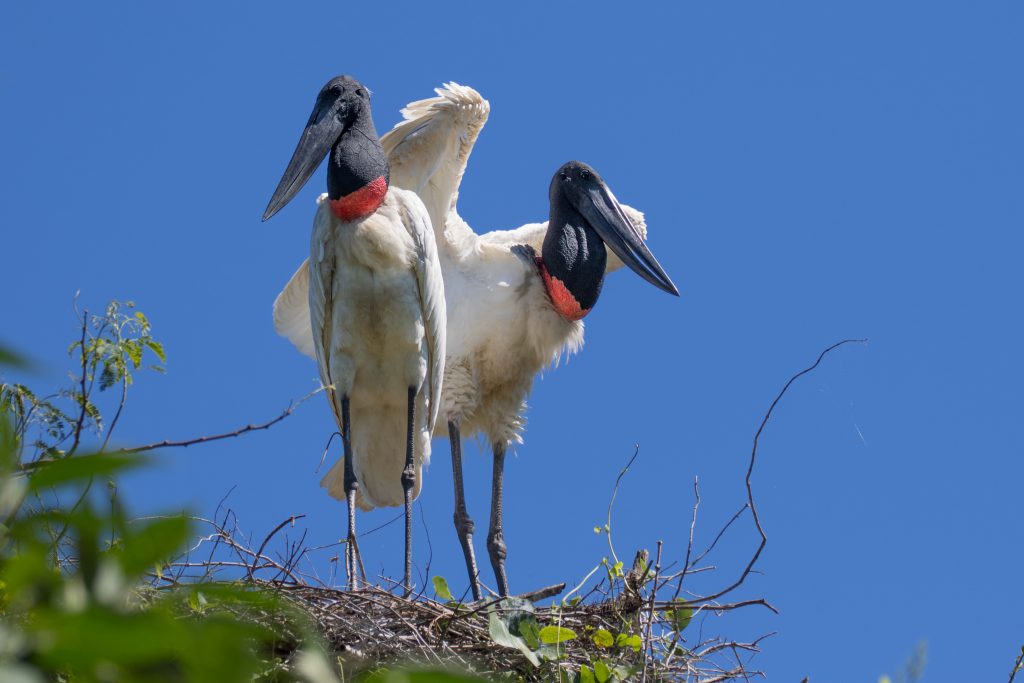
Jabiru mycteria
The Jabiru (or Yabiru in Argentina) is the tallest flying bird in the Americas and males can stand as high as 1.5m. Their range in South America extends from Mexico to Argentina and although locally common in a few places they are in decline. They are found in wetlands such as the Esteros del Ibera, Pantanal and favour freshwater marshland and shallow water in which to hunt. They feed on a wide range of prey such as reptiles, amphibians, fish, large insects and sometimes small mammals. They are a Stork from the family Ciconiidae and build huge nests in the tallest trees they can find. In our area of Ibera the trees are not very tall so the nests are quite visible. They normally lay 2 to 5 eggs which both adults brood. The young fledge at around 110 days and stay with their parents for another 3 months.
Maned Wolf
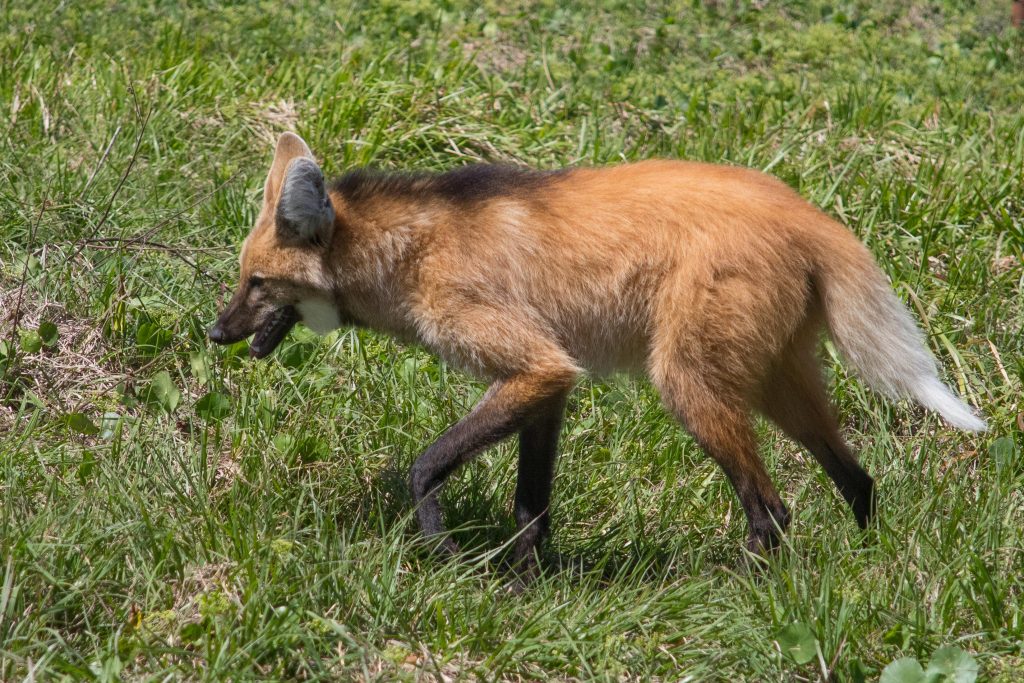
Chrysocyon brachyurus
The Maned Wolf is a solitary animal with a large range and is found only in northern parts of South America, such as Brazil, Eastern Bolivia and Northern Argentina. We have seen this ‘Near Threatened’ species at our reserve on many occasions but it seems to prefer dry conditions so when we are in wetland status (like currently), they are not usually seen. It is the largest canid of South America and is the only species in the genus ‘Chrysocyon’. It is listed as Near Threatened in the IUCN redlist although Brazil lists it as Vulnerable. It is nocturnal, has no natural predators (other than possibly the Jaguar) and preys on small mammals. Its omnivorous diet includes fruit as a major part, usually in the form of Solanum lycocarpum. In Argentina it is known as Aguará guazú.
Red & Green Macaw
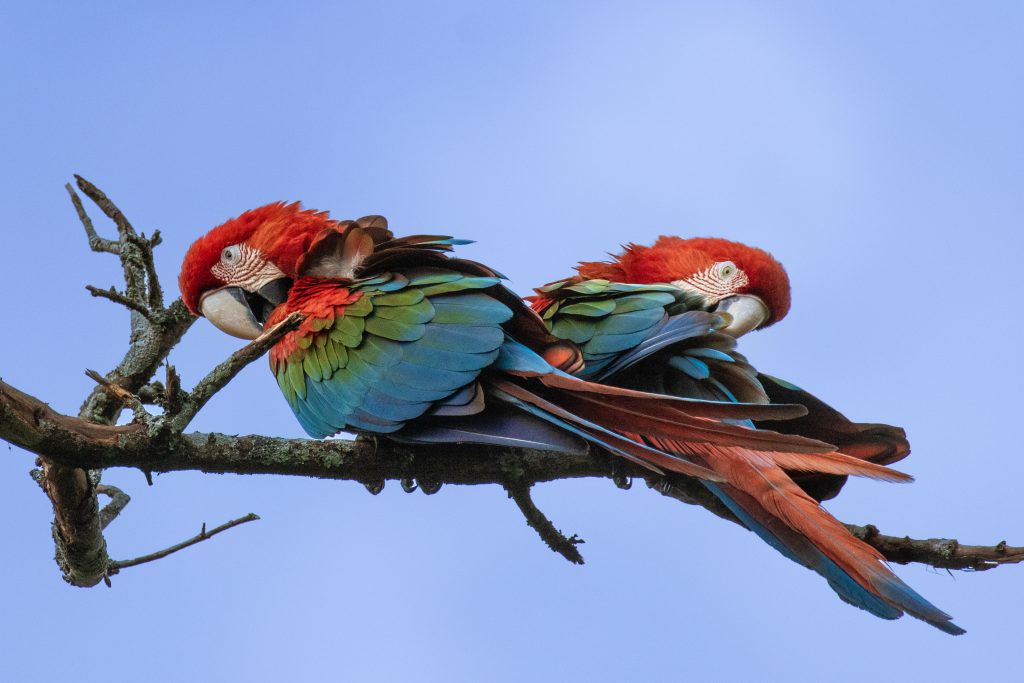
Ara chloropterus
These brightly coloured Macaws have been reintroduced to the Ibera marshes and there are now around a dozen flying free. They are considered Critically Endangered in Argentina due to the indiscriminate hunting and collecting that took place during the last century. The project was created by Re-wilding Argentina, and is now operated from our own reserve.We are privileged to see these birds in our garden and woodlands regularly. They are very brightly coloured and make a tremendous noise. Predominantly fruit eaters, these birds seem to enjoy the seeds of the Timbo and Inga tree. They are large birds with good flying ability and appear very acrobatic when feeding on the trees.
About Our Trust
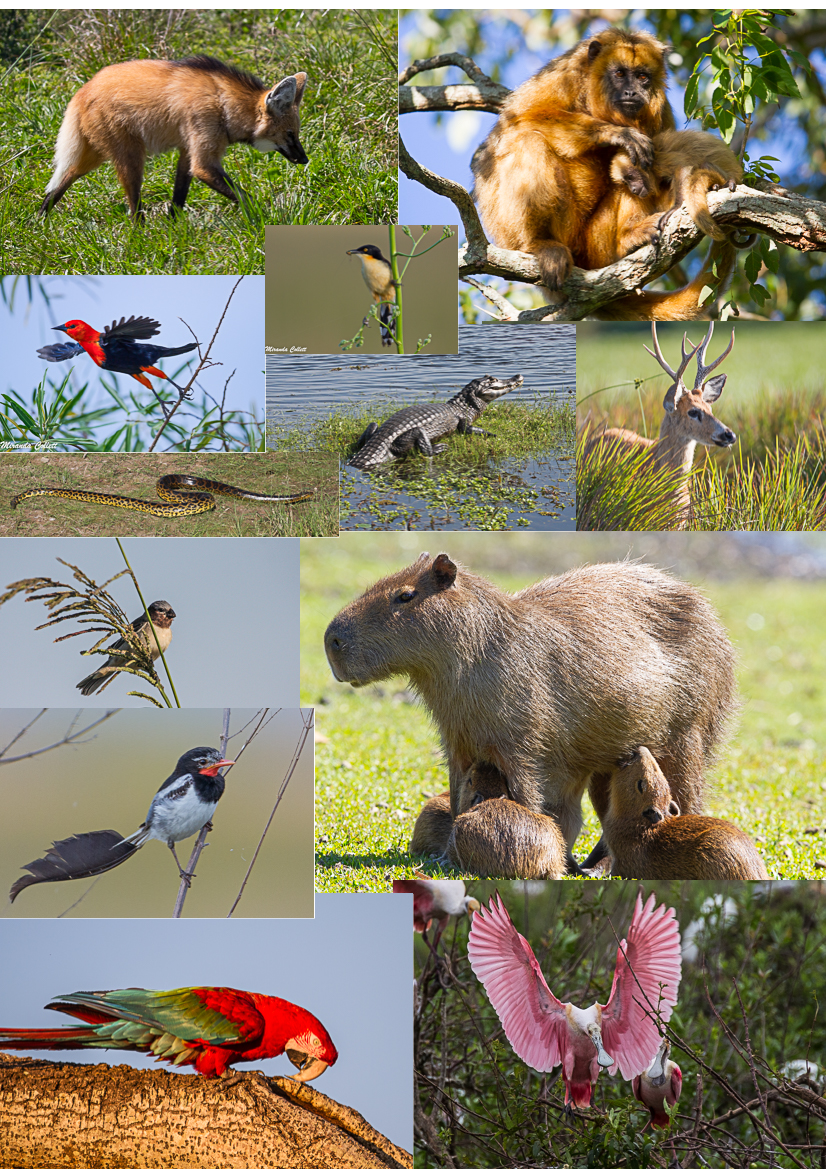
Our trust has been formed with the aim of preserving habitat for species with particular emphasis on areas for endangered species. Most of our interest at the current time lies in North East Argentina. With this aim in mind, we completed the process of buying 1600 hectares of private land in the Esteros del Iberá in 2010. This is a vast wetland in the province of Corrientes consisting over 15,000 km2.
Iberá is the second largest wetland in the Americas, after the Pantanal in Brazil, and has amazing biodiversity which includes over 330 species of bird. It is still relatively unknown and needs a lot more research on the numerous species. Mammals include the near-threatened (NT) Pampas Deer* the (NT) Maned Wolf *and the vulnerable (VU) Marsh Deer.* The (NT) Giant Anteater* has recently been reintroduced to our reserve and we are keeping a look out for it with out camera traps and sometimes our own eyes.
Endangered birds include the (EN) Ibera Seedeater, the (VU) Strange Tailed Tyrant, the (VU) Black & white Monjita,the (VU) Ochre breasted pippit, 2 other Sporophila seedeaters (CR, NT), the Yellow cardinal (EN) and the Saffron Cowled Blackbird (VU).*
* IUCN Redlist
Client Testimonials
Rineke Gordijn

The whole experience was amazing. Our stay included a guided tour with a driver who picked us up where we were staying before. He explained a lot about the park, could name any animal we saw and was very understanding of our interests. Then we arrived at the Don Luis reserva, where the wild wetlands lodge is located. We were welcomed with a delicious lunch, adapted to us vegetarians and vegans. Then we had some time to relax at the eco lodge, which is well equipped with anything you could wish. My parents have used that time to read up on the wildlife or Iberá in the books that are available at the lodge. The best thing is the view and the sounds of the birds, wild guinea pigs and capibaras closeby. And during dawn, the monkeys in the little forest nearby! We also did some horseriding with them, luckily the horses were very calm for my parents who never had been on a horse before. The other meals were just as lovely, for example a vegetable parilla for lunch. Most food comes from the vegetable garden and chickens they have at the reserva. You can see caymen at a little lake close to the lodge, or anywhere on the road when there’s sun. Would definitely recommend wild wetlands lodge to anyone who wants the most out of the natural wonders of Iberá.
Maria Isabel Ledesma

We visited the reserve as a family (children ages 5 and 10) and it was the perfect option. Everything is taken care of, from meals to excursions tailored to the children’s and parents’ schedules (for large specific bird watching and general wildlife excursions). But life on the San Luis reservation surrounds you! From the gallery and surroundings of the cabin we already saw everything. A marvel of diversity: amphibians, reptiles, mammals, birds and insects (don’t forget repellent). We will return!
Pierre-Emmanuel Removille

An unforgettable experience ❤️ Thank you Alejandra, Cepi & all the volunteers Dani, Léo: you are great! All lovers of nature, wildlife & birds 🦅 The excursions are great! The lodge / room lost in the middle of nature & unique! Great food and welcome 👍
Frederika Meyer

An incredible place, full of peace and superbly looked after by Ale and Cepi! They allow you to see wildlife in the wild. They share their knowledge, especially the sighting of free-roaming macaws! An experience worth living! Thank you for everything!
